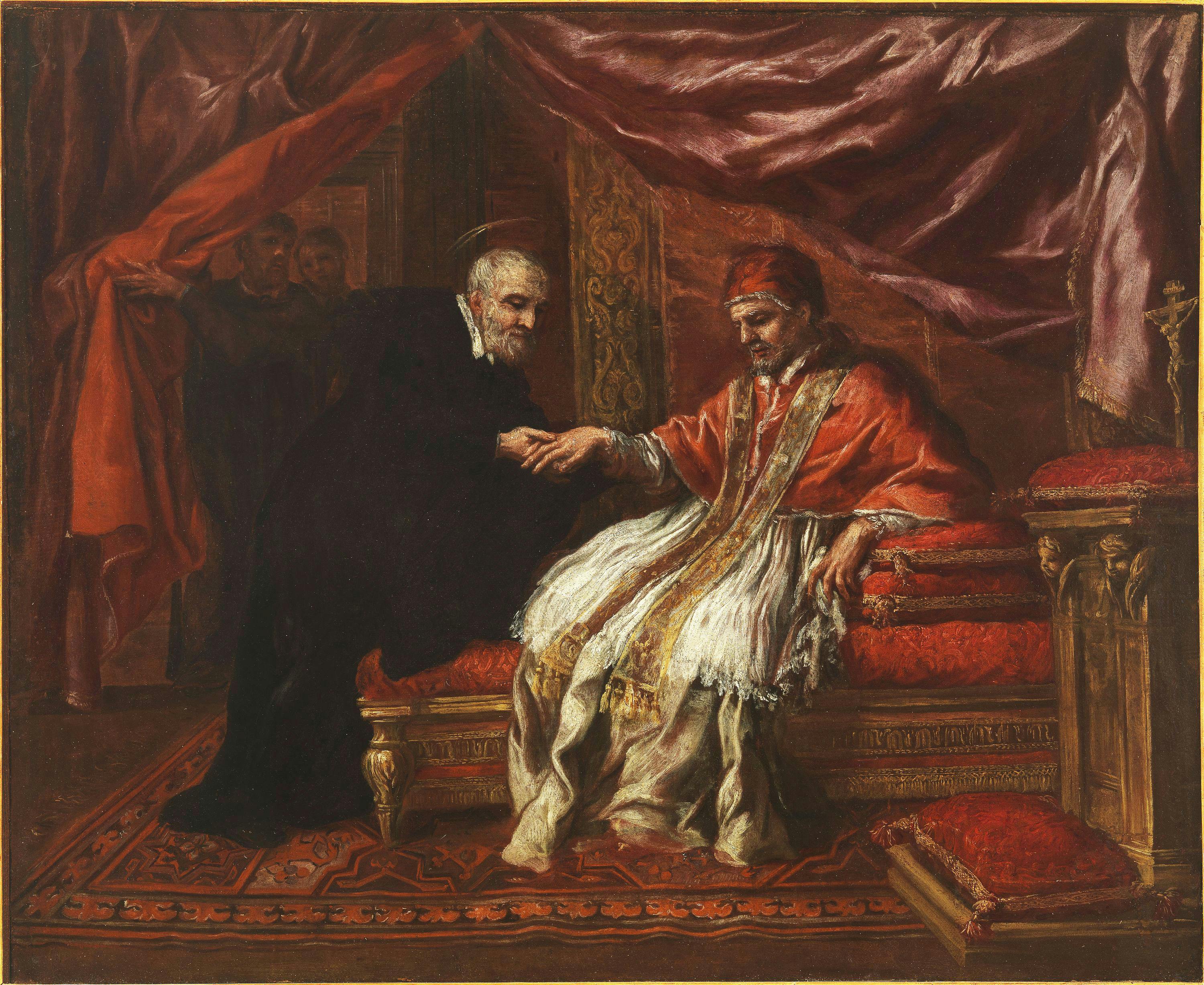St Philip Neri cures Pope Clement VIII from gout
Pietro Berrettini, known as Pietro da Cortona (Cortona 1596 - Rome 1669)
The painting, which had been believed lost, was tracked down in 1969 in the deposits of the Florentine collections, where it underwent further studies. Although, on one hand, the Medici inventories, which document its admission to the Uffizi in 1677, identify the figure of St Philip Neri, describing the scene as an episode of healing a papal figure from gout, on the other hand, they provide no information on the identity of the Pope, which has been interpreted in various ways in the past. Upon its rediscovery, the name of Clement VIII (1592-1605) was suggested, confirmed also by the appearance of the painting along with a canvas by Cristoforo Roncalli depicting a similar subject, found inside the Church of Santa Maria in Vallicella in Rome, the principal church of the Oratorian congregation, founded by St Philip Neri. In fact, the pope, born as Ippolito Aldobrandini, remembered for his attempts to reform Catholicism, his skill in foreign politics but also for his intransigence, which had led Giordano Bruno being burnt at the stake, suffered from a serious case of gout, also known as the disease of kings or popes because it was most common among the richest social classes. Not much was known about the condition and the remedies used to treat it were makeshift. Since the time of Hippocrates, it had been attributed to an immoral lifestyle and a rich diet, but this could not have been further from the truth in the case of Pope Clement, as he led a pious and extremely moral existence. The scene depicted here is not, however, simply a narrative account of the miracle of St Philip Neri which, moreover, was not even the first one he had performed during his evangelistic mission in the troubled city of 16th century Rome. In fact, Pietro da Cortona’s focus is on the intimacy of the moment and the trust with which Clement VIII is holding out his hand to “Pippo Buono” to be treated, a gesture embodying the long-standing relationship of confidence between the two, consolidated in the three year period between 1592 and 1595, between the pope’s election and the saint’s death, during which the episode of the miraculous healing from gout took place. The frankness of the discourse between the two is in fact real (it was believed that St Philip Neri’s advice was behind the pope’s reconciliation with Henry IV of France) and in turn, the intense involvement with which it is portrayed by the painter reflects Berrettini’s own close relationship with the Congregation, for which he worked several times, also creating the masterpiece of the vault of the Church of Santa Maria in Vallicella. He displayed a sensitivity to the Oratorian faith shared by various leading members of the Medici family, including Alessandro Ottaviano - direct follower of the Saint and right-hand man of Clement VIII in his policy in support of the Filipinos - and Cardinal Leopoldo, who attended the Church of Santa Maria in Vallicella. The origin of the painting is unknown, and its date is uncertain (it was painted between 1636, in analogy with the first Roman works for the Congregation and the Florentine years 1640-1642). It does, however, feature elements typical of the Tuscan culture of the period, such as its accurate description of the environment and its sense of narrative. The latter is extended in the background to include the anecdotal detail of two monks who are pulling the curtain back to witness the scene, perhaps a reference to the model of community life that has always been considered the Saint’s greatest legacy.
